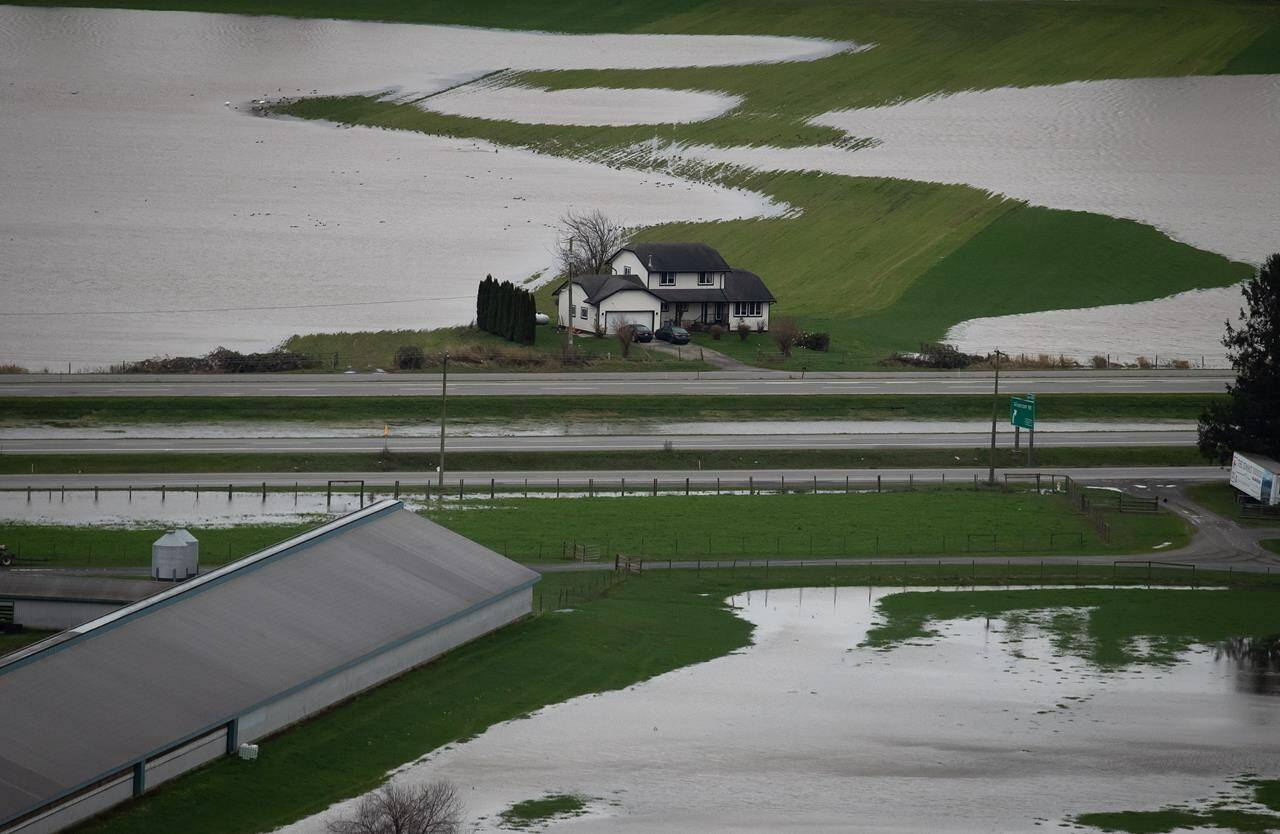Canada’s new national climate adaptation strategy will tie future federal infrastructure transfers to the provinces to projects that incorporate adaptation efforts starting next year.
By 2025, provinces and territories will also have to build climate resilience into recovery efforts to get federal help after a disaster.
The strategy was finalized Tuesday, at a time when most Canadians have already directly experienced the changing weather patterns of global warming.
“We all recognize Canada is not ready to face the impacts of climate change,” Environment Minister Steven Guilbeault said as he presented the final strategy at a news conference in Vancouver.
He said while Canada must do more to slow climate change by cutting down on greenhouse gas emissions, it also must accept that we need to adapt our lives to the changes that have already happened.
The costs to people and the economy are already steep.
In 2021, severe weather caused $2.1 billion in insured damages, which does not include costs related to public infrastructure or uninsured private losses.
Natural Resources Canada said the cost of fighting wildfires has exceeded $1 billion in six of the last 10 years. The bill for 2023 is still being mounted but the number of areas burned has now surpassed the record for a full year, in less than six months.
The Canadian Climate Institute warned last year that the country’s annual disaster recovery bills will be $5 billion a year by 2025.
Had we acted earlier on climate change prevention, the situation may be less dire, Guilbeault said.
“If governments had listened to what scientists and activists were saying 25 years ago, we probably would not be where we’re at today,” he said.
Before politics, Guilbeault was one of those activists, helping found the Quebec environment group Equiterre in 1993 and later heading up the Quebec chapter of Greenpeace.
The national strategy lays out some of the risks the country is facing, and sets both short and longer-term targets for making Canada more resilient to the extreme weather events Guilbeault said are becoming more frequent with “each passing season.”
It aims to reduce the health impacts of extreme weather, such as from extreme heat or wildfire smoke, make infrastructure better able to withstand major storms, and protect and restore nature in a way that helps make communities more resilient to weather extremes.
The strategy was published in draft form last fall but required consultations and buy-in from the provinces and territories before it could be finalized.
There are still bilateral agreements in the works between Ottawa and each province and territory that will be more specific about their individual risks and needs. But British Columbia Environment Minister George Heyman said the national strategy is a good start with “goals, objectives and targets.”
B.C. has been hit repeatedly with major events, from the heat dome in 2021 that killed more than 600 people and led to wildfires that destroyed the town of Lytton, to the atmospheric river that caused catastrophic flooding in the southern parts of the province just a few months later.
“The impacts are escalating and unfortunately we can expect them to continue to escalate,” he said.
The plan separates action into several different categories including disaster resilience, health and well-being, nature and biodiversity, infrastructure and the economy. It includes specific targets and timelines, including the new requirements coming for federal infrastructure and disaster aid.
By 2026, 80 per cent of health regions must have a plan to protect people from extreme heat, something officials said could include making sure there are adequate cooling centres available during heat waves or programs to help people install or afford air conditioning.
That same year, climate change resiliency will be factored into the three national codes for buildings, electricity and highway and bridge design, which could include requirements to help keep buildings cool or strengthen highways and bridges to withstand larger storms.
By 2028 the government wants a plan in place to help communities recover more quickly following an extreme weather event, including rebuilding homes that were lost or allowing evacuees to return home faster.
Two years after the Lytton fire, rebuilding has not even begun for most people.
Also by 2028 the government wants provinces and territories to identify areas at highest risk for wildfires and have prevention and mitigation plans in place for 15 per cent of them. Two years later, those plans must cover all the highest-risk areas.
By 2030 the federal government also intends to establish 15 new national urban parks.
Longer term, the plan calls for the elimination of all heat-related deaths by 2040.
Guilbeault said he can understand why some Canadians may be reluctant to believe another national environmental plan will actually lead to action, but he said there is commitment and buy-in from every level of government. He also promised regular updates and monitoring which he said maximizes the chance of follow-through.
This report by The Canadian Press was first published June 27, 2023.
Mia Rabson, The Canadian Press

